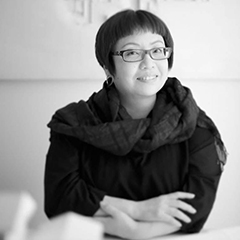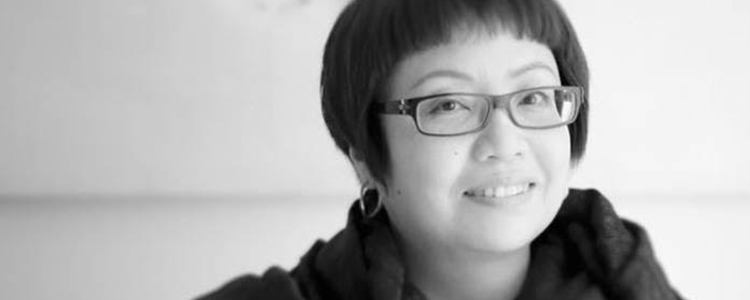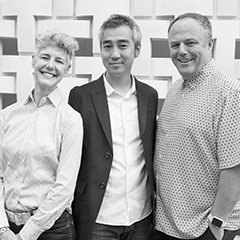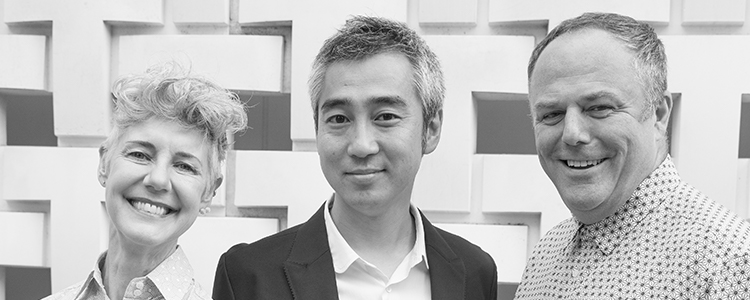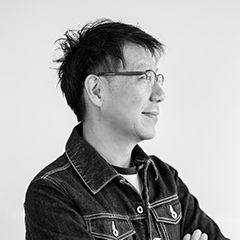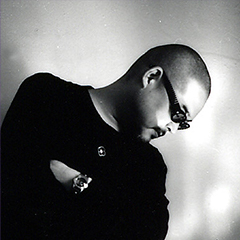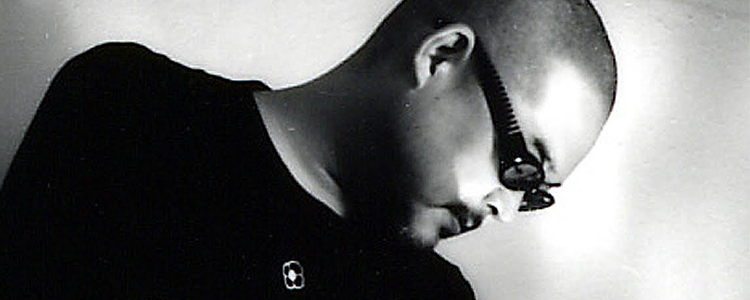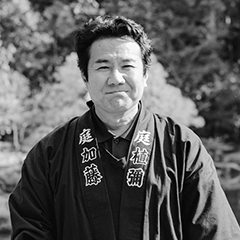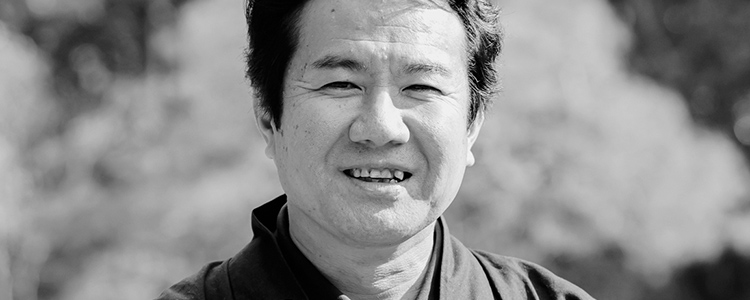Creating
Value.
Co-creators who shape their visions and transform them into value.
Vol.6

Chuzo Tozawa
Chairman, Hinoki Kogei
Doesn’t matter when or where,
I always want to do the greatest work in my life.
We spoke with Chuzo Tozawa who leads Hinoki Kogei, manufacturer of wood furniture and interior décor for luxury hotels, prestigious ryokans, the Imperial Household Agency, government offices, and other signature buildings in Japan. Lauded as a Modern Meister, Tozawa enjoys the complete trust of renowned architects, designers, and world-class companies. We spoke to him about his philosophies and principles for Monozukuri, the art of manufacturing.
Quality first. Economics is not enough to produce quality goods.
I’m into my 54th year as a cabinetmaker, and the company was founded in 1977, so this is our 42nd year. I started my career with a heritage furniture company making custom-ordered special furniture for the National Diet Building, the Imperial Household Agency, and prominent hotels, banks, security firms, and government buildings in Japan. When I was 24, I was put on a team making furniture for what is now the Imperial Palace. I learned then that quality comes first, and to this day I’ve never strayed from that principle in my work. When a corporate entity starts putting revenues first, people lose their motivation and stop taking responsibility for the things they make. Economics isn’t enough to make good quality stuff.
Our company has no “sales people,” and we don’t take on jobs with tight deadlines. We want to engage in every project with the dedication of doing the best work of our lives, not like it’s a throwaway game just to shorten turnaround time. If the deadline’s tight, we’ll insist on having our way and the client will just have to figure out how to accommodate us. But once we commit, we will bring every ounce of our strength to bear, regardless of who we are making it for. We know that if we’re happy with what we’ve made, it will always exceed our clients’ expectations. The creator can’t just bow down to the client. You have to have high aspirations and the power to follow through with your intentions, otherwise there’s no point in being a creator.
Sometimes, for budget reasons, the client will ask us whether we could, say, use thin veneer instead of thick slabs of solid wood for a piece we’re making. But simply switching to a cheaper material doesn’t count as corporate effort at all. Budget considerations or no considerations, we are determined never to compromise on the quality of the finished product, because that would be like ending up with a cotton shirt instead of silk. Rather than using an inferior material, we rack our brains as to whether we can manage by changing the manufacturing method or design. That is the kind of corporate effort we should engage in as craftsmen. On the other hand, there are times when, after we’ve calculated the costs and finalized the specs, I’ll go ahead anyway and use a higher quality material. For Hoshinoya Kyoto, we splurged on Jindai-sugi cedar, a special kind of wood buried underground for thousands of years. We figured that if we played this ace card, we would be in a league all our own. And if this approach sends us out of business, then we’ll just have to start another company, won’t we? Although even though we’re always ready to do just that, it doesn’t look like we’ll be going under any time soon (laughs). Ah well, maybe I’m not cut out to run a business, because budget or no budget, I’ll always be driven by my craftsman’s pride (laughs).

You can’t put your spirit into it if you’re passive about it.
Someone who worked for the architect Junzo Yoshimura once said, “Excellent work is born of good materials and a good creator. If it is blessed with good design, there is nothing better.” Design aside, materials and craftsmen I can secure. Just like the Jindai-sugi cedar we used for Hoshinoya Kyoto, I make sure we always have a stock of materials that I’m happy with. So when I’m briefed about the concept of a project, my imagination begins to run wild and I can sometimes visualize everything from material to shape even before we start. But it won’t do to jump the gun, so I approach the designer saying, “This may be none of my business, but…” and make my suggestion. This way, the designer won’t have to take my suggestion if he or she doesn’t like it. The thing is, I can’t put my spirit in it if I’m passive. That’s why I can’t help making things, even when I know it’s not my business (laughs). But sometimes, the designer or client will be receptive to my excessive passion, like the time I worked on the silver foil counter in the lobby of Hoshinoya Karuizawa. The smoky silver material fascinated me with its wabi/sabi (simplicity and elegance) aesthetics and Japanese spirit, and I just had to try it out. I modeled the shape of the counter after a Japanese sword and presented a mockup. Sometimes I get into trouble when I do this kind of thing before the design is finalized, but in this case, everyone approved. It was unanimous. I’m proud to say no other hotel or ryokan has anything quite like that finish.
Another thing I make sure of is that whatever I make is easy to maintain. I’m especially careful with hotel furniture. For example, the tables in guestrooms can get scratches, burns, or watermarks. Repairing, replacing, and maintaining these items can be very costly. A lasting piece of furniture will save a lot of money over the long run. If you skimp on quality because you’re on a tight budget or whatever, you’ll end up having to throw it away. This is very short-sighted Monozukuri, looking only at the “now.” Taking a broad perspective means thinking of the environment and making things that don’t end up in the trash. Even if it costs a little more initially, you save on running costs and it has a long life cycle. That’s the kind of furniture I always strive to make.
Another thing: once I started thinking about maintenance, I’ve thrown myself into developing durable materials. One recent innovation is a contemporary nashiji finish, a coating of metal powder mixed with adhesive. It can be used on a wide range of metals including brass and aluminum, and is resistant to scratches and heat. Hoshinoya has a history and legacy of treating things with respect, so I like to respond with these high-quality, maintenance-free techniques.

Delving into concepts to reach new horizons
You might say we do research and development, because an ordinary cabinetmaker will build and deliver exactly according to the design drawing. By contrast, we’ll build different prototypes, trying this and that and working in a lot of detail. I don’t think any other cabinetmaker goes that far. Mind you, we never, ever charge the customer for our development costs, which can sometimes be mind-boggling, about triple the original cost calculations. For instance, a chair we’re working on right now is costing us several tens of millions of yen to date, because we wanted to create something on a different dimension outside the client’s budget. We’ve named it the Japan Chair in our aim to make a quintessentially Japanese chair. We make the frame with carbon and finish it with urushi lacquer, the likes of which no one in the world has ever made. We’ve spent about two years on this so far, and once we succeed in reducing the cost a little bit more, we’ll unveil it.
So for any job request, we don’t just do what we are told. We think through the concept very, very seriously. For example, Hoshinoya Kyoto had this concept of “relaxing.” So we thought about how a person might relax in a tatami room, and we felt that ordinary legless chairs don’t quite fill the bill. But no lodging facility, however high-end, offers anything other than deluxe versions of these chairs at the most. So I took it upon myself to figure out the ultimately relaxing chair, and was studying foreign books on furniture when I noticed the chaise longue for kings: they’re made for lying down on when you’re unarmed and vulnerable, without any battle-gear. To this I added the perspective of the Japanese-style room, and made it so that it could be folded up or used as a chair, a sofa, or a bed: the “lounging sofa.” The back of the sofa is latticed because we were asked to open it up to the outside. I’m always thinking about the creation process. We have the designer check it out as we constantly verify the item against the design, in a process of repeated trial, thought, and consultation to arrive at the finish. I think this “lounging sofa” is a masterpiece, if I may say so myself.
There is a lot I would still like to do. Thankfully, we receive lots of inquiries, and we’re working more and more with people around the world who have achieved the pinnacle in various fields. Our original furniture is sold through the world’s most distinguished labels, and recently, we went to give a presentation at the largest automaker in Europe. Thanks to our accumulated experience, we have confidence in our methods and materials; and we’re now more comfortable with design and economics, too. Just recently, people were talking about how there was no foreign equivalent of the Japanese word “ikigai (often translated as “reason for living”). What is “ikigai”? It’s a state in which you’re doing what you like, what you’re good at, what you can make money with, and what’s good for the world. Our clients and partners have trained us well, and it makes me happy that we are now finally able to offer world-class pieces, doing our part for the good of society.

Profile
Born in Aomori prefecture in 1944. Worked for such heritage furniture manufacturers as Mitsukoshi Seisakujo and Takashimaya Kosakujo before setting up his own business in 1977. Known for numerous world-renowned masterpieces. Creates custom order furniture for top Japanese and foreign designers and architects as well as furniture for Imperial palaces and guest houses, the Diet Building, and luxury hotels, as well as the interior for luxury vehicles and special rail cars.
- Major works
- Yohodana tea shelf/Buddhist altar/bamboo plate/Japanese style sofa

